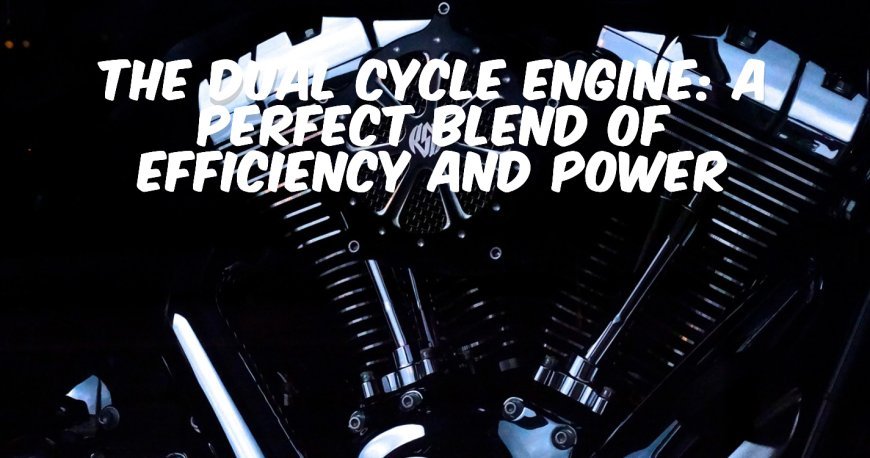Dual Cycle Engine: A Perfect Blend of Efficiency and Power
The dual cycle engine merges the key characteristics of Otto and Diesel cycles to create a balanced, efficient, and powerful internal combustion engine. This innovative approach enhances fuel economy, reduces emissions, and delivers versatile performance across various applications.
Understanding the Dual Cycle Engine: A Comprehensive Overview
By Ayaz Hussain
The dual cycle engine, also known as the mixed cycle engine, combines the features of both the Otto and Diesel cycles, making it a fascinating and efficient power source. This hybrid engine design is particularly beneficial in applications requiring a balance between efficiency and power output. In this article, we will explore the fundamental principles, working mechanisms, and advantages of the dual cycle engine.
Fundamentals of the Dual Cycle Engine
The dual cycle engine operates by integrating the constant volume heat addition process of the Otto cycle and the constant pressure heat addition process of the Diesel cycle. This amalgamation allows the dual cycle engine to optimize fuel efficiency and power delivery, making it an attractive choice for various internal combustion engine applications.
Working Mechanism
The operation of a dual cycle engine can be divided into four key stages: intake, compression, combustion, and exhaust.
-
Intake Stroke:
- During the intake stroke, the intake valve opens, allowing a mixture of air and fuel to enter the combustion chamber. This process is similar to that of both Otto and Diesel engines.
-
Compression Stroke:
- The piston moves upwards, compressing the air-fuel mixture. The compression ratio in a dual cycle engine is typically higher than that of an Otto cycle engine but lower than that of a Diesel cycle engine. This moderate compression ratio helps achieve a balance between efficiency and power.
-
Combustion Stroke:
- The combustion process in a dual cycle engine is divided into two phases:
- Constant Volume Heat Addition: Initially, the air-fuel mixture ignites, causing a rapid increase in pressure while the volume remains relatively constant. This phase resembles the Otto cycle.
- Constant Pressure Heat Addition: As the piston continues its downward movement, additional fuel is injected, maintaining constant pressure within the cylinder. This phase mirrors the Diesel cycle.
- The combustion process in a dual cycle engine is divided into two phases:
-
Exhaust Stroke:
- Finally, the exhaust valve opens, and the piston moves upwards, expelling the burnt gases from the cylinder. The cycle then repeats, allowing continuous power generation.
Advantages of the Dual Cycle Engine
The dual cycle engine offers several advantages over traditional Otto and Diesel engines:
-
Improved Efficiency:
- By combining the strengths of both Otto and Diesel cycles, the dual cycle engine achieves higher thermal efficiency. This results in better fuel economy and reduced emissions, making it an environmentally friendly option.
-
Enhanced Power Output:
- The dual cycle engine's ability to operate efficiently at varying loads and speeds provides superior power output compared to conventional engines. This makes it suitable for applications requiring a broad range of performance, such as automotive and industrial engines.
-
Versatility:
- The hybrid nature of the dual cycle engine allows it to run on different types of fuels, including gasoline, diesel, and alternative fuels. This versatility enhances its adaptability to diverse operating conditions and fuel availability.
-
Optimal Balance:
- The dual cycle engine strikes an optimal balance between the high power density of the Otto cycle and the superior efficiency of the Diesel cycle. This balance makes it a preferred choice for applications where both performance and fuel economy are critical.
Conclusion
The dual cycle engine represents a significant advancement in internal combustion engine technology. By leveraging the benefits of both Otto and Diesel cycles, it offers a compelling solution for applications requiring a harmonious blend of efficiency and power. As the demand for more efficient and environmentally friendly engines continues to grow, the dual cycle engine is poised to play a pivotal role in the future of automotive and industrial powertrains.
What's Your Reaction?








